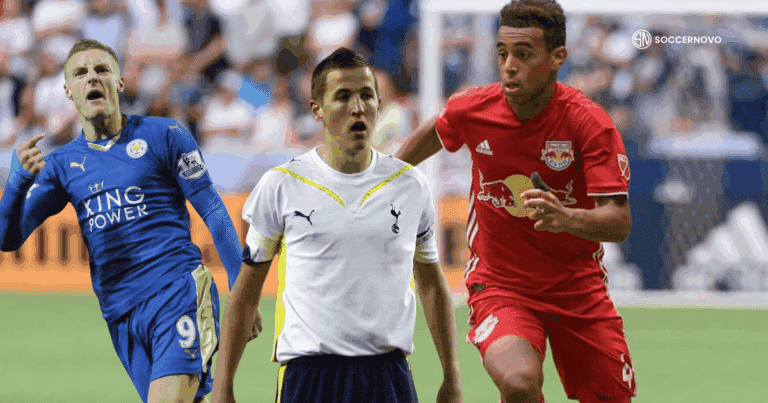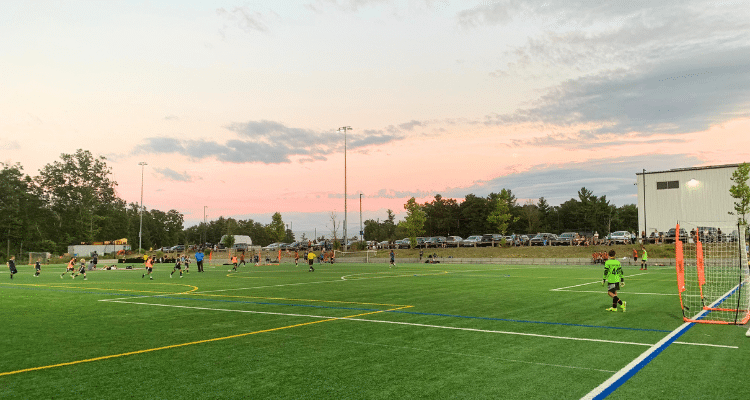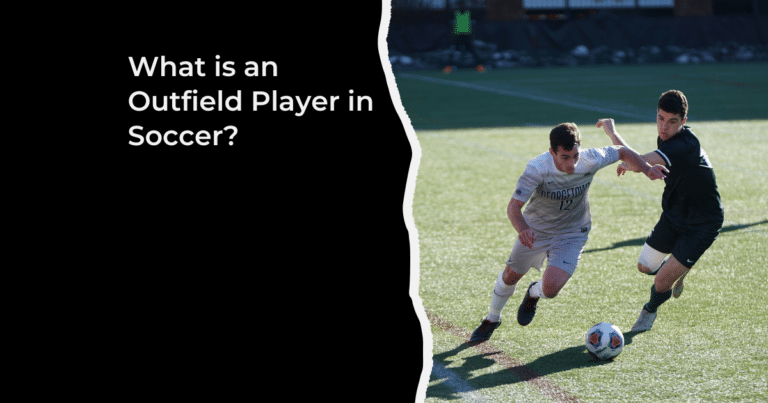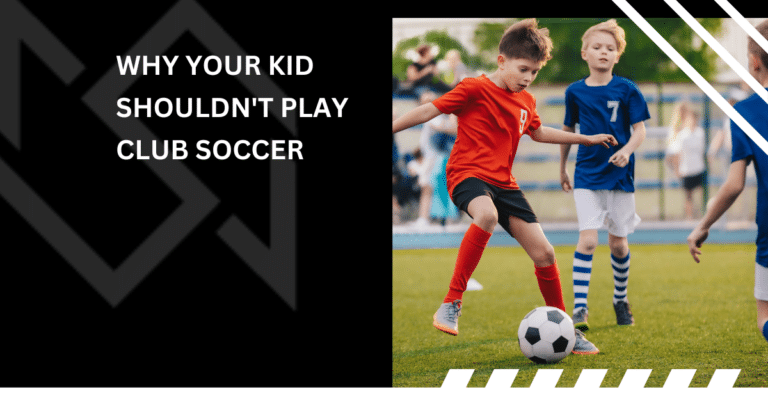What is the Beep Test in Soccer?

What is the beep test in soccer? The beep test, also known as the shuttle run or yo-yo test, is a fitness test used to measure an athlete’s aerobic capacity and endurance. It’s a popular and easy way to test an athlete’s fitness level.
At the club soccer level, it is usually administered during pre-season to get a player’s baseline. The test won’t get you cut from the team but it will help assess your overall fitness level starting the season.
Understanding the Beep Test
To perform the beep test, you’ll need a flat surface, two cones or markers, and a beep test audio recording. The audio recording will play a series of beeps at set intervals, and players need to run back and forth between the cones before each beep.
During the beep test, players run back and forth between two cones placed 20 meters apart. The test begins with a slow pace, but the time between beeps gradually decreases, requiring players to run faster and faster.
If a player fails to reach the cone before the beep sounds, they are eliminated from the test. The test continues until all players have been eliminated or until a predetermined level has been reached.
How to Prepare for the Beep Test
The best way to prepare for the beep test in soccer is to simply stay in shape during the season and off-season.
If you do have a few weeks, here are some things you can do to prepare for the testing:
1. Cardiovascular Training
The beep test is a test of your cardiovascular endurance, so it’s essential to incorporate cardiovascular training into your workout routine.
Running, cycling, swimming, and rowing are all excellent forms of cardiovascular exercise that can help you prepare for the beep test.
Aim to train gradually and then increase the intensity as you move on from week-to-week.
2. Interval Training
Incorporate interval training into your workout routine by alternating between periods of high-intensity exercise and periods of rest or low-intensity exercise.
For example, you could run at a high intensity for 30 seconds, followed by 30 seconds of rest or jogging.
3. Practice the Beep Test
The best way to prepare for the beep test is to practice it. Find a quiet, flat surface and set up the beep test cones or markers.
Start at a slow pace and gradually increase your speed as you become more comfortable with the test. Try to complete the entire test without stopping, but if you need to take a break, do so and then resume where you left off.
4. Proper Nutrition and Hydration
Proper nutrition and hydration are essential for any athletic endeavor. Make sure to eat a balanced diet that includes carbohydrates, protein, and healthy fats. Drink plenty of water throughout the day and before and after your workout to stay hydrated.
Common Mistakes to Avoid on the Beep Test
When it comes to the beep test for soccer, there are some common mistakes that players often make. Here are a few things to keep in mind to avoid making these mistakes:
Starting too fast
One of the most common mistakes is starting too fast. Many players are eager to impress their coach or teammates, and they start running as soon as the beep sounds.
However, this can lead to exhaustion early on in the test, making it difficult to maintain the required pace.
Instead of ‘showing off’, start at a steady pace and gradually increase your speed as the test progresses.
Not pacing yourself
It’s important to maintain a consistent pace throughout the test, rather than running too fast or too slow. This can be challenging, especially as the beeps get faster, but it’s essential if you want to achieve a high score.
Not practicing beforehand
Many players make the mistake of not practicing the beep test before the actual test. This can lead to poor performance on the day, as you may not be familiar with the pace or the requirements of the test.
Make sure to practice the beep test beforehand, so you can get a feel for the pace and improve your endurance.
Focusing too much on the beeps
While the beeps are an important part of the test, it’s important not to focus too much on them.
Instead, focus on maintaining a steady pace and breathing properly. This will help you to conserve your energy and perform better overall.
Ignoring your technique
Make sure to run with proper form, including keeping your head up, shoulders relaxed, and arms swinging naturally. You should also be leaning forward slightly (without a hunch in the back) to give you more momentum.
This will help you to conserve energy and perform better overall.
Interpreting Beep Test Results
Once you have completed the beep test, you will be given a score that reflects your level of fitness. The score is based on the number of shuttles you completed before you were unable to keep up with the pace of the beeps. Interpreting your score can help you determine your current level of fitness and identify areas for improvement.
One way to interpret your beep test results is to compare them to the average scores for your age and gender. This can give you an idea of how you stack up against others in your demographic. For example, if you are a 16-year-old male and you completed 10 shuttles, you might be considered to have average fitness for your age and gender.
Another way to interpret your results is to look at the level of the beep test you completed. Each level of the beep test corresponds to a specific level of fitness. For example, if you completed level 8 of the beep test, you might be considered to have a good level of fitness.
In my opinion, as a player, you should look at the beep test score and then move on from it shortly afterward. What the beep test doesn’t reflect is how you are as a soccer player. There are many more aspects of the game that will express how you are on the field. For example, you may have not scored well on the test but you have strong tackling techniques, a winning mentality, or a knack for the goal.
Conclusion
In conclusion, the beep test is an optional part of a soccer assessment that many clubs, high schools, and colleges buy into. I do think it has value to understand a player’s fitness levels but I equally think it has a small part to do with a player’s development.
As a player, I would not lose sleep over it as some do. Instead, just go out there and do your best! Coaches will quickly forget about the test and you can focus on playing soccer.

Written By: SoccerNovo
SoccerNovo is an independent youth soccer media brand built to help parents, players, and coaches better understand the game and the pathways available in U.S. soccer. Our mission is to make youth soccer simpler, clearer, and more accessible for everyone involved in it.
Let’s connect







